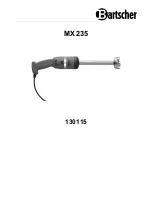
MIXPAD Features
The compact design of the MIXPAD belies an extraordinary versatility.
Add excellent sound quality to the equation, and you’ve got a product
which is equally useful as a live performance mixer and for field
recording applications. Here are some of the MIXPAD’s main features:
• In the MIXPAD 12, a total of twelve input channels (including three
stereo channels); in the MIXPAD 9, a total of nine input channels
(including three stereo channels); in the MIXPAD 4, a total of four
input channels (including one stereo channel). Monophonic
channels provide electronically balanced inputs that can be used for
microphone or line-level input, while stereo channels are ideal for
line-level sources such as outboard signal processors; CD players;
tape or cassette recorders; stereo drum machines; and keyboards
and MIDI tone modules.
• An electronically balanced main stereo output for connection to a
power amplifier or tape recorder.
• A dedicated Tape/CD input for playback of prerecorded material.
• In the MIXPAD 12 and MIXPAD 9, two auxiliary sends and two
stereo auxiliary returns (which can be used as four monophonic
returns). Aux send 1 is pre-fader (but post-equalizer), making it ideal
for use as a headphone or monitor cue mix, while Aux send 2 is
post-fader and post-equalizer.
• In the MIXPAD 4, one auxiliary send and one stereo auxiliary return
(which can be used as two monophonic returns), with the aux send
post-fader and post-equalizer.
• In the MIXPAD 12 and MIXPAD 9, independent 2-band equalization
for each channel, with 15 dB of cut or boost for low (100 Hz) and
high (10 kHz) frequencies.
• In the MIXPAD 4, independent 3-band equalization for each channel,
with 15 dB of cut or boost for low (80 Hz) and high (12 kHz)
frequencies, and 12 dB of cut or boost for the mid (2.5 kHz)
frequency.
2
Summary of Contents for MIXPAD
Page 40: ...Notes ...





































